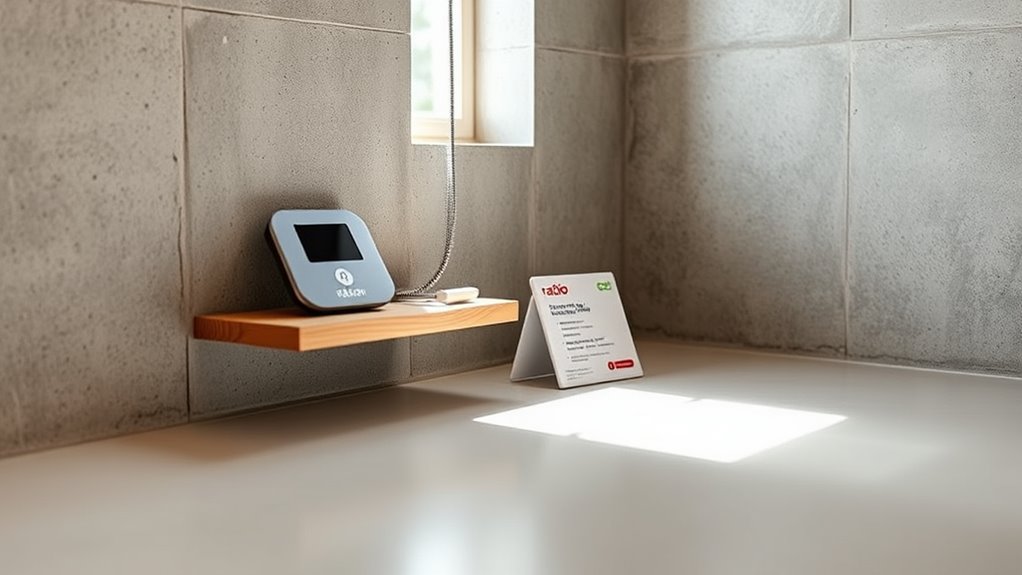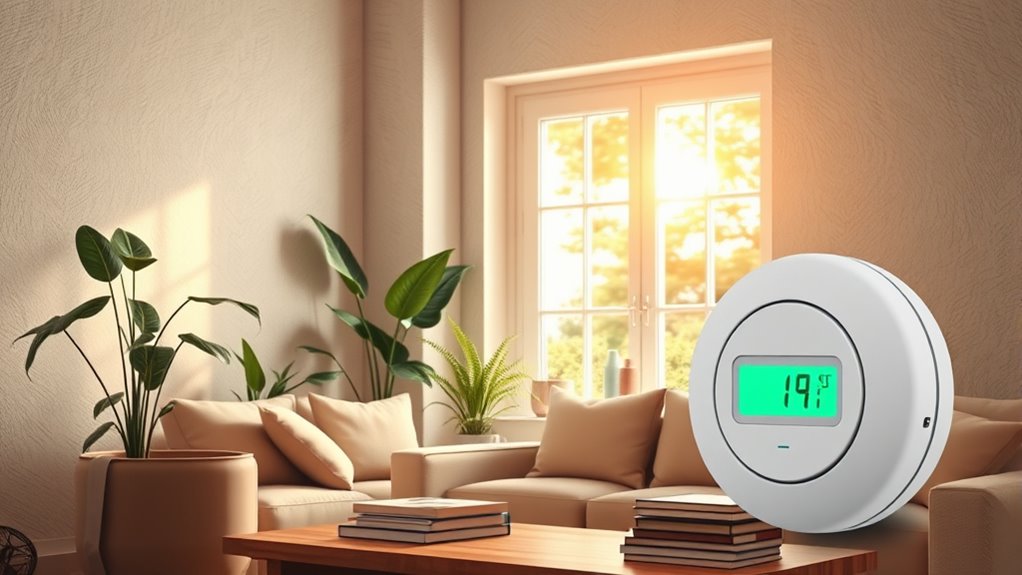Radon is an invisible, odorless radioactive gas that naturally seeps into your home from the ground, posing serious health risks over time. Testing is the only reliable way to detect its presence, and regular checks are recommended—especially in known radon-prone areas. If levels top 4 pCi/L, installing a mitigation system can considerably lower radon. Staying informed about effective safety measures helps protect your loved ones, so you’ll find useful tips on what to do next as you explore further.
Key Takeaways
- Radon is a colorless, odorless radioactive gas that seeps from the ground into homes, often going unnoticed without testing.
- Testing is the only reliable way to detect radon levels and assess health risks inside your home.
- Installing a radon mitigation system, like vent pipes and fans, effectively reduces radon below EPA recommended levels.
- Regularly re-test your home after mitigation to ensure radon levels remain safe and systems are functioning properly.
- Proactively testing and mitigating radon protects your family’s health regardless of your home’s age or style.

Have you ever wondered how a naturally occurring gas like radon can quietly pose a health risk inside your home? Radon is a colorless, odorless radioactive gas that seeps from the ground into indoor spaces, often unnoticed. Because of its silent nature, many homeowners remain unaware of its presence until testing reveals dangerously high levels. That’s why radon testing is essential—it’s the only reliable way to determine if your home has unsafe radon concentrations. You can perform short-term tests, which provide quick results over a few days, or long-term tests, giving a more accurate picture over several months. No matter which method you choose, testing helps you understand your exposure risk and decide on appropriate mitigation steps.
Once you discover radon levels are elevated, mitigation techniques come into play. The goal is to lower radon concentrations to safe levels, which the Environmental Protection Agency (EPA) recommends be below 4 picocuries per liter (pCi/L). Installing a radon mitigation system is the most effective solution. Typically, this involves a vent pipe system and a fan that pulls radon from beneath your home and vents it outside, preventing it from accumulating indoors. These systems are relatively straightforward to install, especially in basements and crawl spaces, and they can substantially reduce radon levels. In some cases, sealing cracks and openings in your foundation can also help, but sealing alone isn’t enough to eliminate radon—it’s most effective when combined with active mitigation techniques.
In addition to testing and mitigation, staying informed about advancements in radon reduction technology can help ensure your system remains effective over time. If you’re concerned about radon, don’t wait. Regular radon testing should become part of your home maintenance routine, especially if you’ve recently moved to an area with known radon issues. The good news is that mitigation techniques are proven to work, and they can make your home much safer for you and your family. Once a mitigation system is in place, it’s wise to retest your home to ensure radon levels have dropped to a safe range. Remember, radon doesn’t discriminate—any home, regardless of age or construction style, can have elevated radon levels. Taking proactive steps through testing and mitigation will give you peace of mind, knowing you’re protecting your loved ones from this invisible threat.
Frequently Asked Questions
How Often Should I Test for Radon in My Home?
You should test your home for radon at least every two years, as recommended intervals, to verify safety. It’s also wise to test after any major renovations or if your home experiences increased humidity or structural changes. Regular testing helps catch elevated radon levels early, reducing health risks. Keep in mind, short-term tests can be useful for initial screening, but long-term tests provide a more accurate picture of your home’s radon levels.
Does Radon Only Affect Certain Types of Homes?
Radon can affect any home type, regardless of construction materials. You should test your home if it’s built with materials like concrete or stone, or if it has a basement or crawl space. Even newer homes aren’t immune. Radon levels vary based on your location and home design, so don’t assume your home is safe. Regular testing is essential to protect yourself and your family from potential health risks.
Can Radon Levels Vary Seasonally?
Yes, radon levels can vary seasonally due to fluctuations in temperature effects and seasonal fluctuations in ventilation. During colder months, you might notice higher radon levels because homes are often sealed tighter to retain heat, reducing ventilation and trapping radon inside. Conversely, in warmer months, increased ventilation can lower radon concentrations. Monitoring your radon levels throughout the year helps you understand these seasonal fluctuations and take appropriate action.
Are There Any Health Symptoms From Radon Exposure?
You might not notice radon health effects right away, as radon symptoms often develop over time. Prolonged exposure increases your risk of lung cancer, especially if you smoke. Common radon symptoms aren’t obvious, which is why regular testing is essential. If you experience respiratory issues or persistent coughs, it could be related to radon health effects. Stay proactive by testing your home and reducing radon levels to protect your health.
What Are the Costs of Radon Mitigation Systems?
Did you know that radon mitigation systems typically cost between $800 and $2,500? You’ll find that installation costs vary depending on your home’s size and foundation type. Maintenance expenses are usually minimal, often just periodic filter replacements or system checks. Investing in a mitigation system is a smart move to protect your health, and understanding these costs helps you plan financially for a safer indoor environment.
Conclusion
Now that you know about radon lurking unseen in your home, think of it as an invisible thief sneaking through your walls. But don’t worry—by testing and venting, you can turn your house into a fortress, keeping this silent intruder at bay. Take action today, and breathe easy knowing you’ve closed the door on radon’s sneaky visit. Your home should be a safe harbor, not a hidden hazard waiting to surprise you.










